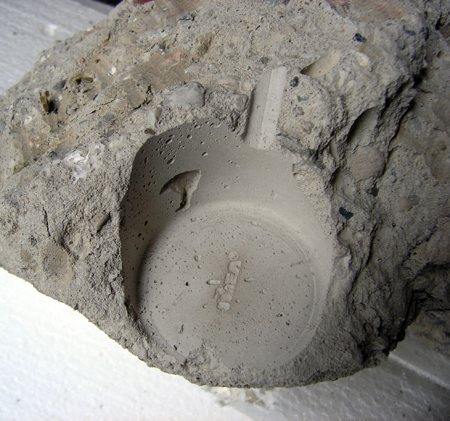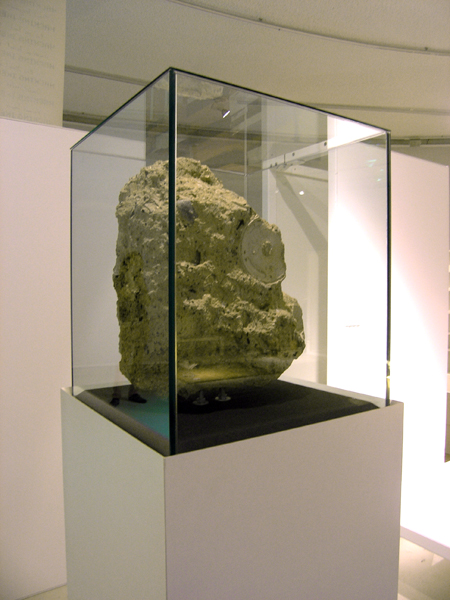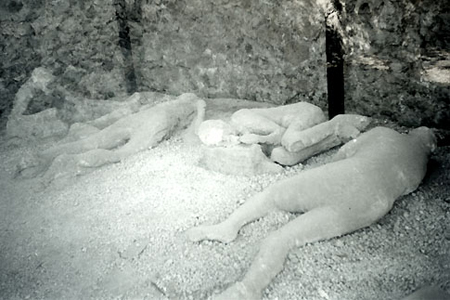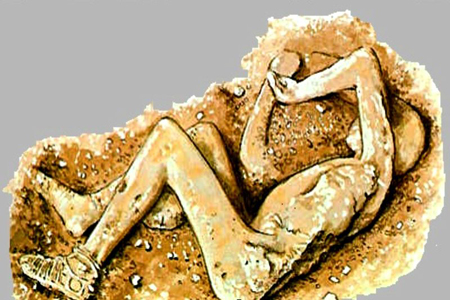Modern Archaeology III
Maarten Vanden Eynde
Plato’s Closet, 2008 A.D.
When the IKEA catalogue became the most printed book in human history (beating the bible for the first time ever) it was clear that a new geological layer was added around the millennium, 2000 A.D., consisting mainly of IKEA products. In the future this period in time would become known as the IKEA-era. It took several centuries before their imperium was going in decay disappearing under the next layer of history. This negative fossil is one of the oldest remains of an IKEA closet, containing traces of a lamp and cup which probably stood on the closet. The left over void functions as a mother-mould enabling reproduction forever.
This work was made in the context of the exhibition ‘Hacking IKEA’ at Platform21. Original IKEA products: MALM closet, KVART lamp, LJUVLIG cup
POMPEI, Italy
Plaster moulds of people buried by ash and lava from the erruption of Mt Vesuvius that obliterated Pompei in 79 A.D. (The garden of the fugitives).
These mold formations were discovered as early as 1860 by one of the first archaeologists at Pompei, Giuseppe Fiorelli. He is credited with developing the process by which the molds – one might call them negatives in clay – are turned into the positive plaster forms. The technique was further refined by the archaeologist Amadeo Maiuri, who was in charge of Pompei excavations for much of the present century.




september 14th, 2008 at 16:09
I’ve heard some good things about this blog. Remember to balance the pics with the text tho. cheers!